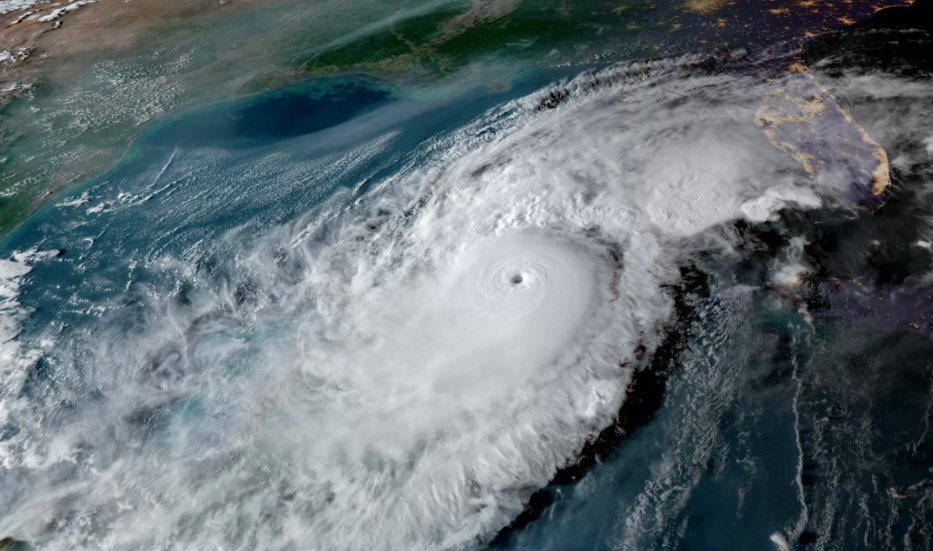Modernization Push Replaces Decades-Old Systems as Climate Policy Shifts Under Trump Administration In a significant shift that reflects both technological modernization and evolving federal climate policy, the U.S. Navy will permanently terminate its satellite weather data-sharing agreement with the National Oceanic and Atmospheric Administration (NOAA) on July 31, 2025, according to a NOAA statement released …
Navy Ends Longstanding Satellite Weather Data Sharing with NOAA


By Sarah Hunter,
Senior Reporter, The Midtown Times | Article Published on July 03, 2025
Modernization Push Replaces Decades-Old Systems as Climate Policy Shifts Under Trump Administration
In a significant shift that reflects both technological modernization and evolving federal climate policy, the U.S. Navy will permanently terminate its satellite weather data-sharing agreement with the National Oceanic and Atmospheric Administration (NOAA) on July 31, 2025, according to a NOAA statement released this week.
The Fleet Numerical Meteorology and Oceanography Center will cease transmitting weather data gathered from military satellite systems, including the Defense Meteorological Satellite Program (DMSP) and other Department of Defense (DoD) assets.
“This service change and termination will be permanent,” NOAA stated.
End of an Era for DMSP: A Legacy System Retires
The DMSP satellites have, for decades, delivered vital meteorological data by capturing global images twice daily, tracking weather systems such as fog, tropical cyclones, and sandstorms, especially over remote regions. These satellites helped military and civilian forecasters monitor atmospheric conditions and anticipate hazardous weather.
However, the DMSP system, initially designed for Cold War-era operations, has long exceeded its expected service life. According to NOAA, the system is now more than ten years past its projected end of life, making it increasingly unreliable for long-term use.
WSF-M and EWS: The Future of Military Weather Monitoring
The decision to terminate DMSP data sharing aligns with the Pentagon’s broader shift toward newer, more capable platforms. The Navy and the U.S. Space Force are now focusing on the Weather System Follow-on Microwave (WSF-M), which reached Initial Operational Capability in April 2025.
Launched in 2024, the WSF-M offers higher-resolution imaging and advanced data on environmental conditions, including sea ice, soil moisture, snow depth, wind patterns, and cyclone activity. It will work in tandem with the Electro-Optical Weather System (EWS) to fill the gap left by DMSP’s phaseout.
While the Navy’s move ends the direct flow of DMSP data to NOAA, the agency still has access to critical global weather insights through its Joint Polar Satellite System, as well as buoys, other satellites, and ground-based radar systems worldwide.
A Strategic Pivot Amid Political Climate Shifts
This data-sharing change coincides with a broader political context: the Trump administration has taken steps to downplay federal focus on climate change, including the removal of climate language from U.S. Coast Guard Academy policies earlier this year.
Although some environmental advocates expressed concern over the loss of DMSP inputs, NOAA emphasized that the transition to WSF-M and EWS is part of a strategic modernization initiative:
“The discontinuation of certain DMSP data streams may seem alarming, but this is a move toward more resilient and enhanced environmental monitoring systems,” NOAA said. “These systems will improve our understanding and forecasting of extreme weather events, including hurricanes.”
Defense Department Modernization Across All Branches
The Navy’s withdrawal from DMSP data sharing is part of a wider Pentagon modernization campaign. The U.S. Army is currently overhauling its satellite communication network, and this spring installed new teleport systems in Okinawa, set to go fully operational by November 2025.
At the same time, the U.S. Space Force continues to face challenges upgrading GPS systems, according to a Government Accountability Office report last fall, which cited aging technology and performance gaps.
Adding to its modernization momentum, the Department of Defense recently awarded a $28.4 million contract to L3Harris Technologies to strengthen the Navy’s satellite communications infrastructure.
As NOAA prepares to operate without military satellite weather support for the first time in decades, defense officials insist the shift marks not a retreat, but a leap forward—one that could ultimately yield more precise and dependable environmental data in a rapidly evolving global landscape.
Source: Adapted from “Navy to stop sharing satellite weather data with NOAA” by Zita Fletcher, Military Times, July 2025. www.militarytimes.com

The Midtown Times is committed to delivering accurate, timely, and comprehensive news to our readers.








